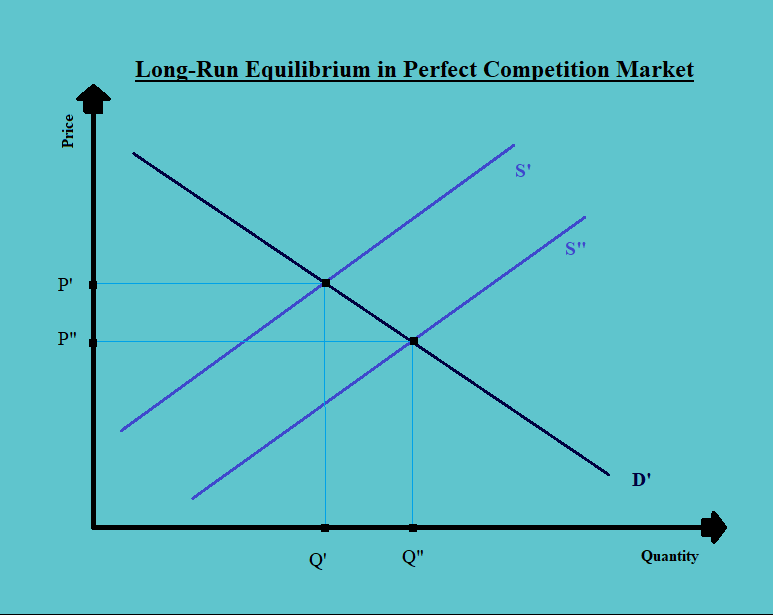

Sometimes, sellers supply more of a product than buyers are willing to purchase in that case, there’s a surplus. For one thing, markets rarely operate without outside influences. Things are much more complex in the real world. But we must be aware that this is a very simplistic example. What have we learned in this discussion? We’ve learned that without outside influences, markets in an environment of perfect competition will arrive at an equilibrium point at which both buyers and sellers are satisfied. If, on the other hand, a farmer tries to charge less than the equilibrium price of $0.60 a pound, he will sell more apples but his profit per pound will be less than at the equilibrium price. If a farmer tries to charge more than $0.60 for a pound of apples, he won’t sell very many and his profits will go down. Thus, $0.60 is the equilibrium price: at this price, the quantity of apples demanded by buyers equals the quantity of apples that farmers are willing to supply. The formula that you use to calculate equilibrium price and quantity is Qd=Qs and then following the steps that are outlined above.You can see in Figure 1.8 “The Equilibrium Price” that the supply and demand curves intersect at the price of $0.60 and quantity of two thousand pounds. Sometimes people will refer to the equilibrium price and quantity formula, but that is a bit of a misnomer. Other times you will want to calculate a change in equilibrium after an income change.

Related lessons: Sometimes you will what to solve for equilibrium after a shift in either supply or demand. So we know that equilibrium price is 6, and equilibrium quantity is 200. Or (subtract 50 from both sides, and add 50P to both sides to get)

Supply is describedīy the equation QS= 50 + 25P where QS is quantity supplied. Quantity demanded, and P is the price of the good. Suppose that demand is given by the equation QD=500 – 50P, where QD is We can use this information to solve for equilibrium price even though we don’t know what Qd and Qs are! Once we do have equilibrium price, we can use this information to back out what Qs and Qd are. Since supply and demand will only cross at one point, we know that when Qs = Qd that we are at equilibrium. The reason we set Qs equal to Qd is because we know that in equilibrium they must be equal.


 0 kommentar(er)
0 kommentar(er)
